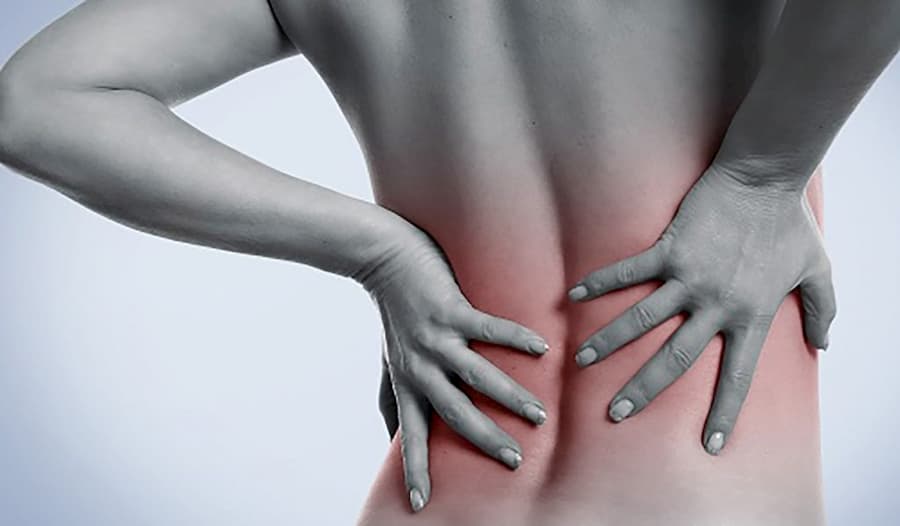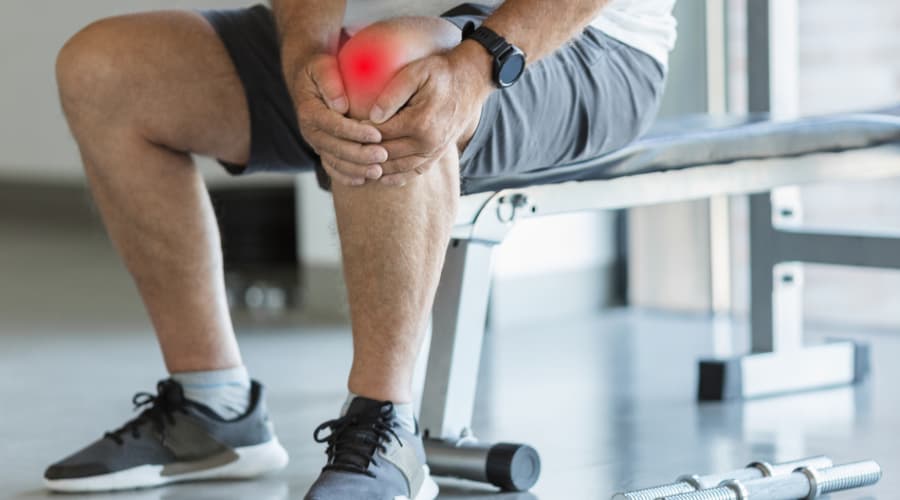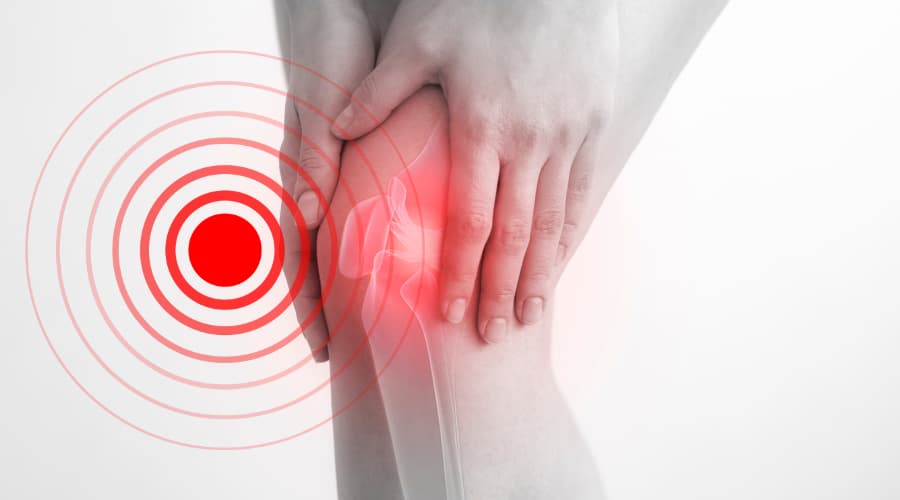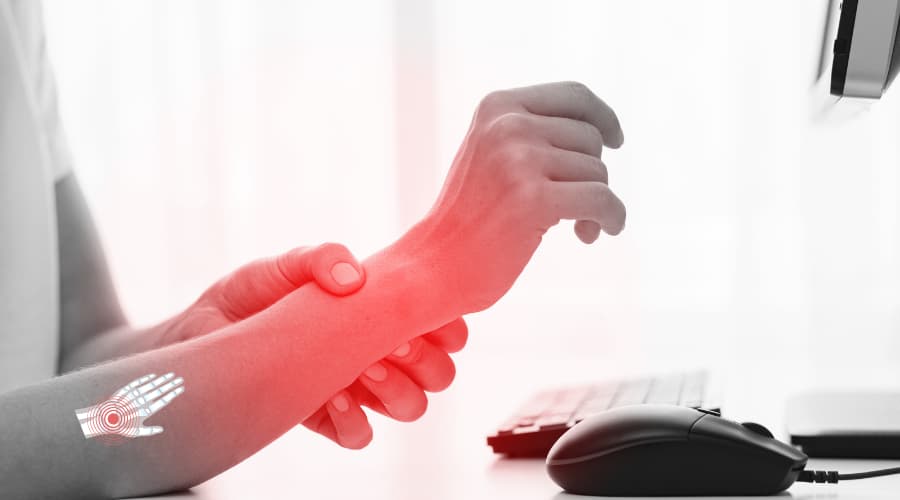The nagging discomfort of sciatic pain can’t be overstated, however, there are therapeutic ways to combat this terrible pain. If you’re struggling with the often hopeless feeling of how to treat your sciatic nerve pain, there are ways to relieve it without medical or surgical intervention.
Contrary to popular opinion, taking a load off, sitting or lying down, sometimes causes more discomfort than walking or standing. If you work a job that requires you to sit, you may very well be at your worst or highest level of pain when sitting behind a desk. Besides work, other routine daily activities may interfere with your sciatica problem. For instance, sitting down to a meal, seated exercises, driving, and other seated activities, may all exacerbate your sciatic nerve pain.
Although there are medical treatments including medication, physical therapy, and even surgery that may treat or even remedy your sciatic nerve pain in the long run, these are not always immediate nor are they options for all sciatica sufferers. For starters, nerve-pain medications may impair your ability to focus or operate heavy machinery. Physical therapies may take time to elicit improvement and surgeries may be too invasive to your sensibilities. If you’re interested in alternate solutions to medical interventions for sciatic nerve pain, read on.
Certainly, it’s not realistic to complete all of your routine tasks from a standing or lying position, so finding ways to sit comfortably despite sciatica is imperative. One of the many helpful ways to deal with sciatic nerve pain is with thoughtful and tempered sitting positions. By learning to sit properly, you can return peacefully, painlessly, and enjoyably to comfortably partaking in your everyday activities.
Sitting Comfortably Despite Sciatica
If you are experiencing symptoms commensurate with sciatica, symptoms like shooting lower back pain that radiates down the back of your leg, numbness in your leg and foot, constant discomfort, and weakness, you probably grapple with finding comfortable positions. Nothing is more aggravating to your body and spirit than being unable to find comfort in performing menial daily tasks. Furthermore, if you’re inclined to seek out medical help, appointments and treatments will likely not occur immediately. So what can you do for immediate relief?
Improved Posture
In addition to other at-home therapies like deep stretching, heat application, topical agents, and/or a lumbar brace, sitting properly may help to alleviate sciatic nerve pain. Positioning your body in an upright position in a supportive chair, with both feet firmly planted on the floor, at a 90° angle to your torso, is not only the best position for your spine, but it also alleviates pressure on your sciatic nerve. Placing a small stool, crate, or box under your feet to achieve the best angle for your feet may also help relieve sciatic pressure.
Lumbar Support
Furthermore, adding lumbar support to your chair will not only force your body to posture correctly but will relieve unwanted pressure on your sciatic nerve. Because sciatica stems from your lumbar region, which may be tight or weakened and causing sciatic pressure, correcting your posture with lumbar support can improve your sciatica symptoms. Although there are many lumbar support products made specifically for chairs on the market, you’d do just as well with a rolled-up towel positioned behind your lower back. Thankfully, whether you invest in a special lumbar pillow or opt for the more convenient rolled-up towel, a lumbar support device is both helpful and convenient; it’s easy and light enough to travel with, transport to and from work, and position on any chair.
Reclining Chairs
Not surprisingly, there is not a one-size-fits-all approach to finding the best seated position for sciatica. All sciatica sufferers are different and may find other ways to successfully alleviate sciatic nerve pain when seated. Depending on precisely where the sciatic pressure stems from, you may find relief in leaning back in your chair. If you find that you’re most comfortable when leaning back, it may benefit you to invest in a flex-back desk chair. One of these chairs may give you the much-needed sciatica relief you desire.
If you have a recliner at home, you may find sciatic relief there as well. Choose your recliner when you sit down at the end of a long day instead of a sofa or hard chair. If you find sciatica relief when reclining, a cosy recliner is your best option for seated comfort while at home.
Moreover, if it’s safely possible to do so, it may be beneficial to play with your car’s seat position. If you have a long commute each day, the pain of traveling to and from work may be unbearable. Finding a way to safely and comfortably travel to and from work and beyond is imperative. If you can safely operate your vehicle while still alleviating your sciatic nerve pain, that would surely be ideal.
Crossed Legs
Because sciatic nerves run down the buttocks and legs individually on each side of your body, aggravation to the sciatic nerve typically only affects one side, the injured or aggravated side, at a time. As such, sitting cross-legged may alleviate sciatic nerve pressure on the affected side. In other words, by lifting your affected leg over the other and resting the weight of that leg elsewhere, pressure may be lifted from the sciatic nerve.
Seated Exercise
Another solution to improving your ability to sit comfortably despite sciatica is to practice a seated nerve exercise at regular intervals. Sciatic nerve pain typically stems from pressure on the sciatic nerve resulting from a herniated spinal disc. A common yet useful tactic for combatting this nerve pain is to employ the seated nerve glide exercise. Notably, this exercise helps to temper and desensitize the sciatic nerve.
The seated nerve glide exercise involves sitting upright in your chair, keeping the unaffected foot firmly on the floor, while raising the affected leg, straightening the knee, and slowly bending the ankle towards and away from your body. Essentially, you flex your foot and point your toe, while in a raised-leg position, until you feel the tension in your sciatic nerve. It’s recommended that, as tolerated, you increase tension and thereby the depth of the stretch. Adding the component of bending the head forward, drawing your chin to your chest, also improves the effectiveness of this stretch. Repeat the pumping action of your ankle 15-20 times per set, completing at least three sets, if tolerable, per day.
Lastly, of utmost importance, is to do this stretch with both legs so that the strength and elasticity of your muscles are bilateral. Finally, the importance of maintaining and/or improving muscle strength can’t be overstated. Strong spinal structures support the back while weakened spinal structures lead to poor posture and increased trauma and strain. So using this seated nerve exercise in addition to other recommended stretches and movements can greatly improve your overall sciatic health.
Apply Low Heat
If possible, applying continuous heat throughout the day may prove soothing to your aggravated sciatic nerve. There are many adhesive heating patches that, applied in the morning, can provide comforting heat to your lumbar spine. Heat wraps, which can typically be purchased at your local pharmacy, can be applied under your clothes, directly to the impeding area, and deliver low heat for up to eight hours. If you prefer a heating pad, that’s also a helpful and convenient option for applying heat to the affected area. A heating pad can be purchased and placed behind your back while sitting throughout the day as well.
Other Options
Although we’ve glossed over a few options for treating sciatica, there are other medical and non-medical methods for successfully alleviating sciatic nerve pain. Chiropractic adjustments, massage therapy, and deep stretching are restorative to your back health.
Related Articles
- Sciatica – Information & Treatment
- Chiropractor or Osteopath for a Trapped Nerve or Sciatica
- Nerve Pain in Hip: Symptoms & Treatment
- Back Exercises for Trapped Nerve
- How To Relieve Pain From a Trapped (Pinched) Nerve




